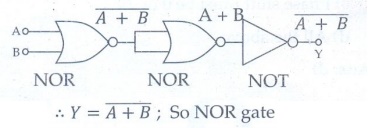with Answers | Communication Systems | Physics - Multiple Choice Questions | 12th Physics : UNIT 10b : Communication Systems
Chapter: 12th Physics : UNIT 10b : Communication Systems
Multiple Choice Questions
EVALUATION
I Multiple Choice Questions
1. The output transducer of the communication system converts the radio signal into ________
(a) Sound
(b) Mechanical energy
(c) Kinetic energy
(d) None of the above
2. The signal is affected by noise in a communication system
(a) At the transmitter
(b) At the modulator
(c) In the channel
(d) At the receiver
3. The variation of frequency of carrier wave with respect to the amplitude of the modulating signal is called ------------------
(a) Amplitude modulation
(b) Frequency modulation
(c) Phase modulation
(d) Pulse width modulation
4. The internationally accepted frequency deviation for the purpose of FM broadcasts.
(a) 75 kHz
(b) 68 kHz
(c) 80 kHz
(d) 70 kHz
5. The frequency range of 3 MHz to 30 MHz is used for
(a) Ground wave propagation
(b) Space wave propagation
(c) Sky wave propagation
(d) Satellite communication
Answers
1. a 2. c 3. b 4. a 5. C
BOOK BACK ONE WORDS:
1. The barrier potential of a silicon diode is approximately,
a) 0.7 V
b) 0.3V
c) 2.0 V
d) 2.2 V
Answer: a)
2. Doping a semiconductor results in
a) The decrease in mobile charge carriers
b) The change in chemical properties
c) The change in the crystal structure
d) The breaking of the covalent bond
Answer: c)
3. In an unbiased p-n junction, the majority charge carriers (that is, holes) in the p-region diffuse into n-region because of
a) the potential difference across the p-n junction
b) the higher hole concentration in p-region than that in n-region
c) the attraction of free electrons of n-region
d) the higher concentration of electrons in the n-region than that in the p-region.
Answer: d)
4. If a positive half-wave rectified voltage is fed to a load resistor, for which part of a cycle there will be current flow through the load?
a) 0°-90°
b) 90°-180°
c) 0°-180°
d) 0°-360°
Answer: c)
5. The zener diode is primarily used as
a) Rectifier
b) Amplifier
c) Oscillator
d) Voltage regulator
Answer: d)
6. The principle based on which a solar cell operates is
a) Diffusion
b) Recombination
c) Photovoltaic action
d) Carrier flow
Answer: c)
7. The light emitted in an LED is due to
a) Recombination of charge carriers
b) Reflection of light due to lens action
c) Amplification of light falling at the junction
d) Large current capacity
Answer: a)
8. The barrier potential of a p-n junction depends on (i) type of semiconductor material (ii) amount of doping (iii) temperature. Which one of the following is correct?
a) (i) and (ii) only
b) (ii) only
c) (ii) and (iii) only
d) (i) (ii) and (iii)
Answer: d)
9. To obtain sustained oscillation in an oscillator,
a) Feedback should be positive
b) Feedback factor must be unity
c) Phase shift must be 0 or 2π
d) All the above
Answer: d)
10. If the input to the NOT gate is A = 1011, its output is
a) 0100
b) 1000
c) 1100
d) 0011
Answer: a)
Solution:
For NOT Gate output Y = Ᾱ
Here A = 1011 . ∴ Y =0100
11. Which one of the following represents forward bias diode?

Answer: a)
12. The given electrical network is equivalent to

a) AND gate
b) OR gate
c) NOR gate
d) NOT gate
Answer: c)
Solution:

13. The output of the following circuit is 1 when the input ABC is

a) 101
b) 100
c) 110
d) 010
Answer: a)
Solution:
Y = (A+B)C
For Y = 1; C must be 1
The input ABC is 101
Y= (1 + 0).l = 1
14. The variation of frequency of carrier wave with respect to the amplitude of the modulating signal is called _________
(a) Amplitude modulation
(b) Frequency modulation
(c) Phase modulation
(d) Pulse width modulation
Answer: b)
15. The frequency range of 3 MHz to 30 MHz is used for
(a) Ground wave propagation
(b) Space wave propagation
(c) Sky wave propagation
(d) Satellite communication
Answer: c)
Related Topics